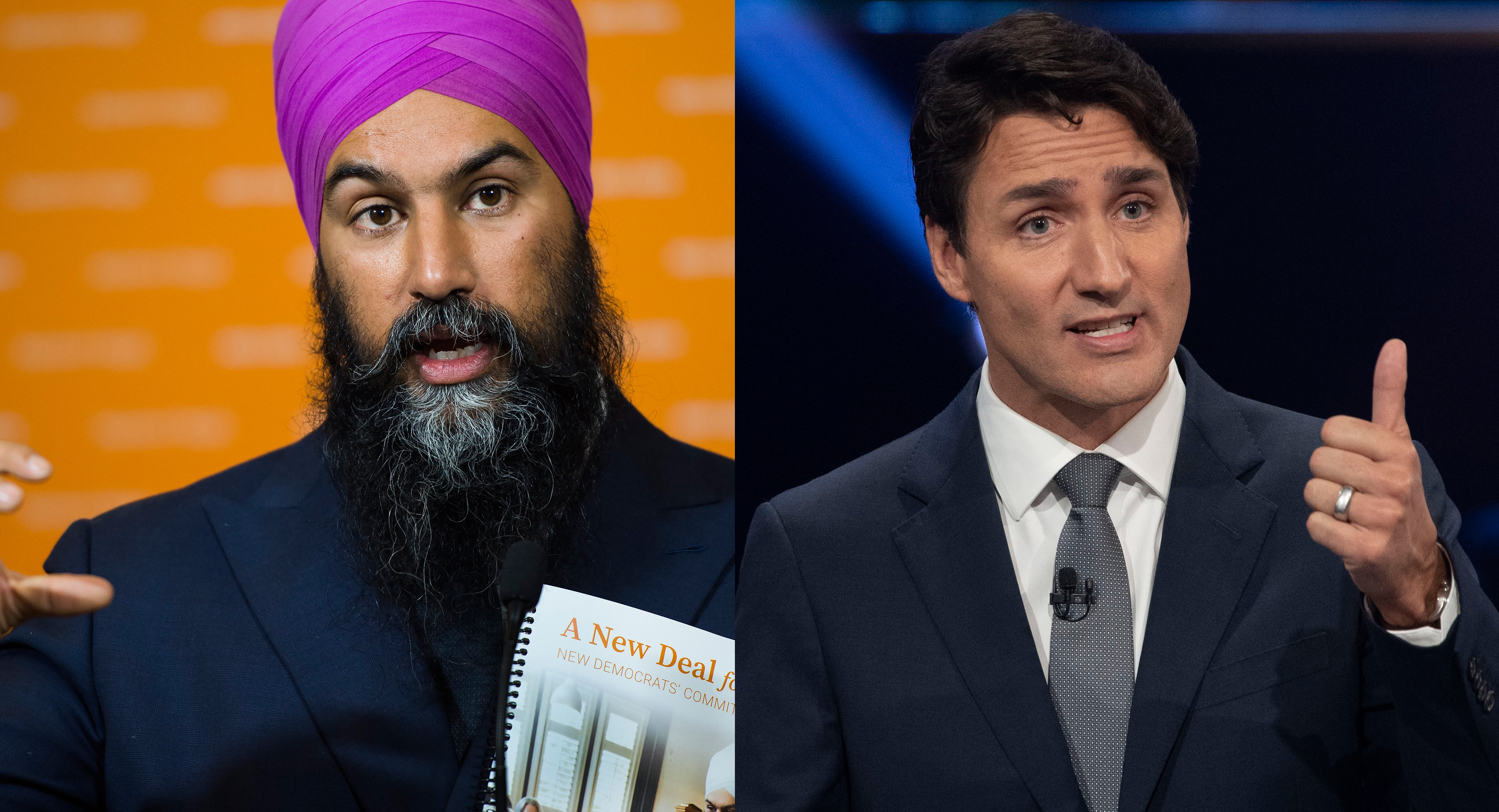What You Need to Know About a Liberal-NDP Coalition

Credit to Author: Steven Zhou| Date: Tue, 15 Oct 2019 20:45:53 +0000
Surging NDP Leader Jagmeet Singh’s declaration that he’s willing to work with other parties to keep the Conservatives from forming government has thrown the election for a loop in its final week.
Singh was asked by reporters in Surrey, B.C. about whether he’s open to working with other parties, including the Liberals.
“Oh absolutely,” Singh replied, “because we're not going to support a Conservative government.”
“We're going to fight a Conservative government, gonna fight it all the way,” he added.
He’s since walked back that enthusiasm by saying that he’s focused on his own party’s performance first and foremost. But it’s hard to put that genie back in the bottle, especially with less than a week left until election day.
Polls suggest that either the Conservatives or Liberals could win a minority government, which could give the NDP the balance of power. If the Liberals win a minority, they would likely be able to keep their government afloat by courting the NDP (or the Bloc Quebecois) on a vote-by-vote basis, similar to Paul Martin’s Liberal government in the mid-2000s. However, Singh has seemingly opened the door for the scenario in which a second place Liberals form a coalition government with the NDP, leaving the first-place Conservatives as the Opposition. It would be a historic situation for Canadian politics.
For a true coalition government, the Liberals and NDP would have to hammer out an agreement regarding issues like who to fill which leadership roles and how the cabinet will be divided. Then they’re to present the agreement to Governor General Julie Payette for permission to make it happen and show they could carry the confidence of the House This would certainly be a controversial prospect given that Payette was a Liberal selection.
However, before you get too excited (or scared) about a progressive Canadian government forming next week, here are some key points to consider.
Justin Trudeau has to be open to the idea for it to work
Reporters asked Trudeau on Monday whether or not he’d consider the idea of forming a coalition for Singh’s NDP.
He dodged the question 10 times, preferring to say instead that his “focus is on electing a progressive government and stopping Conservative cuts,” and that his primary aim is to win a Liberal majority. Then he followed that up by saying how the NDP will tear up the NAFTA agreement.
It doesn’t seem that Trudeau is ruling out the possibility, but he’s not making any commitments either way.
Andrew Scheer is already using the coalition spectre in his messaging
Scheer was more than happy to use all the speculation to suggest that only a Conservative majority can stop an NDP-Liberal alliance.
On Monday, the Conservative leader portrayed Trudeau’s inconclusive answers as equivalent to being totally open to a coalition. He said that the Liberals are desperate and will cling to power anyway they can.
He warned that such a coalition “will lead to even higher taxes, less jobs, more deficits and bigger household bills” as Singh’s kingmaker role will position the NDP to call all the shots.
Scheer also ruled out any possibility of his party forming a coalition with another party, emphasizing that he’s only shooting for a majority government.
There’s only been one federal coalition government in Canadian history. And it was over 100 years ago.
The only time a coalition was formed in Canada was in 1917 when then Conservative Prime Minister Robert Borden formed an alliance with enough Liberals and independents to push through the Military Service Act. The law allowed conscription of Canadian men in the last year of the First World War.
The coalition led to the creation of a “Union government” that won a big majority in December 1917, but the election was bitterly contested and nothing like it has been formed ever since.
The NDP and Liberals tried in 2008 to form one but got rejected
That doesn’t mean no one has ever tried.
In 2008, just weeks after Stephern Harper’s Conservatives won a minority government, the Liberals under Stephane Dion tried to form a coalition with Jack Layton’s NDP.
The two parties even signed an accord together agreeing that Dion would lead the coalition, with a pledge of support from the Bloc Quebecois. The NDP would get a quarter of the cabinet positions.
The idea was to oust Harper in a vote of non-confidence given how he was, according to opponents, doing little to weather the 2007-08 global recession.
But Harper ended up shutting down Parliament, delaying such a vote. Dion stepped down soon and Michael Ignatieff, the new Liberal leader, turned down the coalition idea.
As of Monday, a Nanos Research poll showed that the Liberals and Conservatives each have about 32 percent support, followed by 19 percent for the NDP and 9 percent for the Green Party.
Unless there’s some serious movement in the last week, a majority by anyone seems unlikely.
That means the coalition speculation is likely hang around to further colour the last days of this election campaign.
Follow Steven on Twitter.